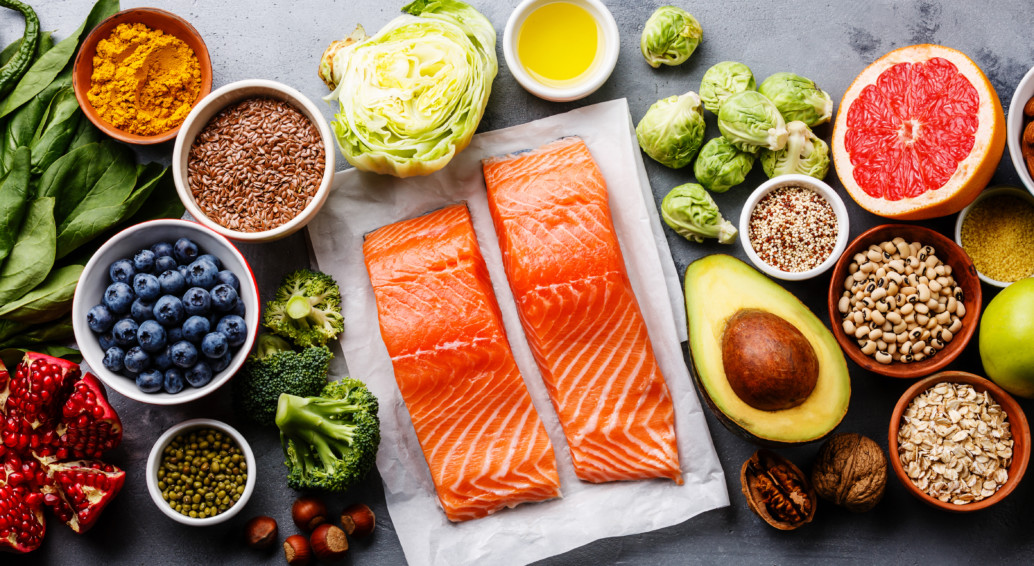Anti-Inflammatory Foods

The Link Between Inflammation and Chronic Diseases
Inflammation is a sign that the immune system is fighting infection. The infection may be related to germs, wounds, allergens, toxins or other causes. Typically, we think of signs of inflammation as redness, swelling, and pain. But, sometimes inflammation can happen within our bodies. Someone with bronchitis has a lung infection. The lungs may become inflamed. And, this may be a sign that their immune system is working to fight that infection. Excess body fat may promote changes in the body cells that promote chronic inflammation. The signs of inflammation may not be obvious. For others, chronic inflammation may relate to a problem with their immune system.
Whatever the cause, long term chronic inflammation may damage the body’s DNA, increasing the risk for cancer.
What We Know and Don’t Know About Foods and Inflammation
Various anti-inflammatory diets are promoted online. But, researchers are still figuring out how what we eat may affect inflammation. So far, it appears that eating a variety of nutritious foods may help reduce inflammation in the body. What we eat may help prevent and keep chronic inflammation in check. And, a healthy eating plan provides nutrients that help keep your immune system working well:
• Fruits and vegetables contain natural components called phytonutrients that may help protect against inflammation.
• Healthy fats, such as monounsaturated fats and omega-3 fatty acids, may help keep inflammation at bay.
Foods high in saturated fats may increase inflammation. Plus, highly processed foods and other foods with trans fat also may be inflammatory.
Five Dietary Approaches That May Help Reduce Inflammation
Step 1: Make Fruits and Vegetables Half Your Plate
• Aim to include vegetables and fruits with every meal
• Eat a variety of brightly colored vegetables and fruits:
– All forms count — including fresh, frozen, canned and dried. Just be sure to look for products with no added sugars and lower amounts of sodium.
– Focus on vegetables from each subgroup weekly, including dark green, red and orange vegetables, as well as beans and peas.
Step 2: Be Smart about Protein
• Don’t overdo the protein — five- to six-ounce equivalents per day is appropriate for most people that are moderately active. And, when it comes to protein, select fatty fish containing omega-3s a couple of times each week.
• Enjoy meatless meals with tofu, tempeh, and legumes such as beans, peas, and lentils.
• Choose leaner protein foods, such as skinless chicken or turkey or lean cuts of beef and pork.
• Include low-fat or fat-free dairy products, like skim milk and yogurt, which are lower in saturated fat.
• Minimize highly processed foods such as deli meat, bacon, and sausage.
Step3: Choose Healthy Fats
• Use monounsaturated fats, including olive, safflower, sunflower, canola, peanut and avocado oils.
• Eat omega-3 rich foods:
– Enjoy salmon or another fatty fish two to three times per week.
– Snack on nuts, such as walnuts.
– Toss ground flaxseed, chia seeds and hemp seeds into salads and other dishes.
• Minimize highly processed foods that contain partially hydrogenated oils and high amounts of saturated fat.
Step 4: Select Whole Grains
• Choose whole-grain flours and cereals more often, rather than those made with refined flour.
• Include a variety of whole grains, such as brown rice, quinoa, millet, and wheat berries.
Step 5: Experiment with Fresh Herbs and Spices
• Infuse flavor into your dishes by adding fresh herbs.
• Spice up your recipes by experimenting with spices.
Other Lifestyle Factors
Though what you eat is important, it’s not the only factor that impacts chronic inflammation. To help stay healthy:
• Get adequate sleep — both quality and duration of sleep directly impact inflammation.
• Be active — regular physical activity has anti-inflammatory effects. Aim for 30 to 60 minutes of moderate-intensity physical activity a day on most days of the week.
• Achieve and maintain a healthy weight — excess body fat could contribute to increased inflammation.
Source: eatright.org